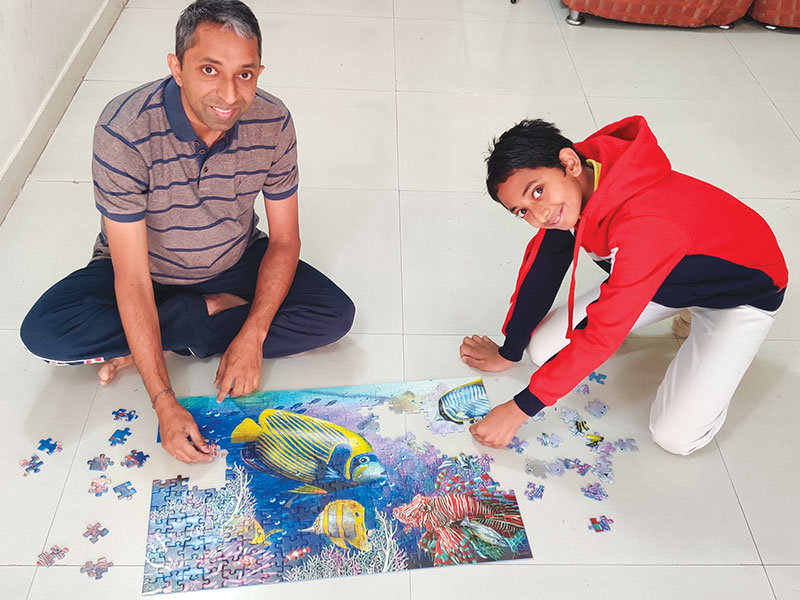Defined as thought processes that address problems and devise solutions in the same manner as a computer would, computational thinking enables children to develop critical thinking, logic, analysis and problem solving skills – Jayalakshmi Vaidyanathan
“There is growing recognition in education systems around the globe that in a world awash with computers, capability to problem-solve computationally, i.e, logically and algorithmically, and use computational tools, is becoming a necessary competancy for all STEM and allied fields subjects. Therefore we need ‘computational thinking’ (or CT) to become a core skill — or ‘5th C’ — taught to all students in addition to the ‘4Cs’ of the 21st century — critical thinking, creativity, collaboration, and communication,” says Dr. Shuchi Grover, an alumna of Harvard and Stanford universities and US-based computer scientist.
According to Dr. Grover, computational thinking is fundamentally about using analytic and algorithmic concepts and strategies to formulate, analyse and solve problems. And since conceptualising solutions for problems using CT need not involve a computer, even though the execution of the solution usually does, CT can be taught without the use of computers. “Educators worldwide have found it more convenient to think of CT as a set of concepts (the ‘what’) and practice (the ‘how’). CT concepts include logic and logical analysis; algorithms and algorithmic thinking; patterns and pattern recognition; abstraction and generalisation, evaluation and automation. CT practices include problem decomposition; creating computational artefacts (through coding); testing and debugging; iterative refinement, aka incremental development; collaboration and creativity as well as re-using solutions,” adds Grover.
In progressive K-12 private schools in India, CT is increasingly being integrated into STEM curriculums and/or taught as a co-curricular activity. For instance under the CSpathshala (www.cspathshala.org) initiative of the Association for Computing Machinery (ACM) India, currently 300,000 students in 750 schools in 11 states countrywide, are learning CT through unplugged activities (learning computing without computers). Launched in 2016, CSpathshala’s objective is to “promote computer science education in K-12 education and influence policy makers to introduce computing into mainstream curricula as well as to train teachers so that every child in India learns computing as a science”.
“The CSpathshala CT curriculum and teaching aids are available free-of-charge online. Schools can download, adapt and integrate it into their maths and/or computer science syllabuses,” says Vipul Shah, head, ACM India’s CSpathshala initiative.
CT — the process of analysing a problem and systematically developing a solution that can be coded as software for computers to implement — necessitates teaching children four core key skills:
Problem recognition. This requires ideation about the common factors of parts of a problem and using precedents to find solutions. Continuing with Arav’s case history, he lists previously faced challenges such as time management, procuring resources and transporting the science model to school without damage.
Abstraction. This is about focusing on vital details of a task and ignoring trivial and unimportant facts.
Arav systematically lists the ways and means to best address the problem and presents the most workable solutions. He sources all materials needed to create the prototype within the given time frame and draws a flow chart to smoothly implement the problem resolution programme.
Algorithmic thinking. This requires specifying a series of steps to solve a problem. Arav now collects all materials and systematically works to build the prototype.
“Developing computational thinking skills from early age develops children’s vital skills of logical reasoning and problem solving. Development of these skills will enable children to become knowledge creators and innovators, who will find solutions to some of the world’s most pressing problems,” says Sudarshan R, national coordinator of the Advanced Learning Centres, Education for the Gifted and Talented, National Institute of Advanced Studies (NIAS), Bangalore.
Ram Venkatraman, a cybersecurity specialist and father of two children, advises parents to introduce computational thinking without using digital devices. “Getting children to solve jigsaw and Lego puzzles and even playing sudoku enables them to use deductive logic. Jigsaw puzzles are especially useful to develop computational thinking — reequiring sorting to building parts of the whole, and finally assembling completed parts to complete the whole as one image,” says Venkatraman.
